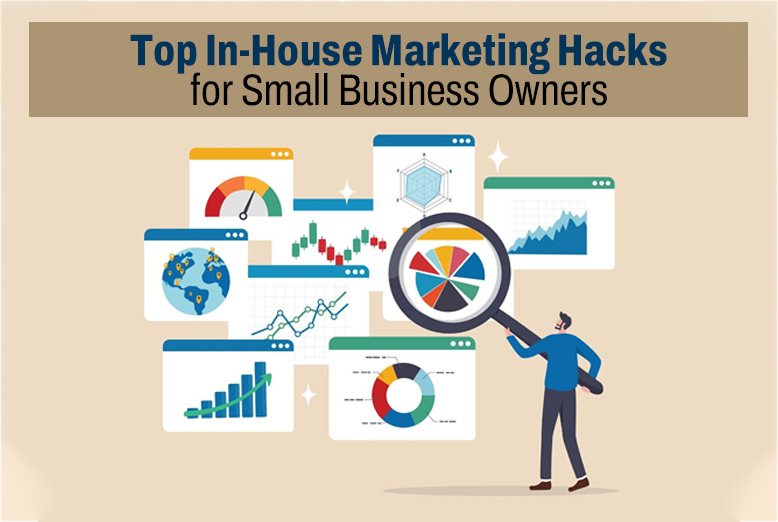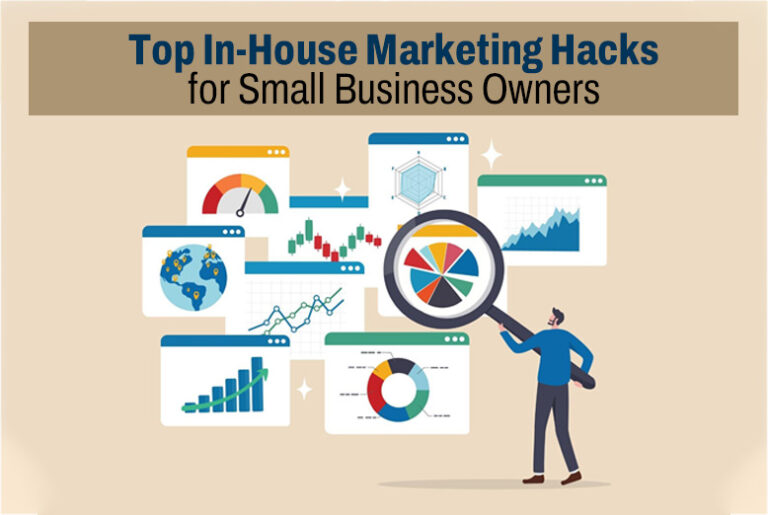Small businesses can greatly benefit from having a results-driven marketing plan in place. It not only enhances brand awareness and builds up a loyal customer base but also helps increase trust levels, which keeps those customers coming back.
Reaching new customers or improving profit margins could be as simple as implementing better promotional tactics or offering product discounts. As a small business, you can quickly experiment with various tactics and retain only those which give the best ROI.
Of course, SMEs can often struggle with limited budgets and resources – but combined with the lack of tech awareness and the hectic pace of business operations, the benefits of investing in improved marketing tools are frequently overlooked.
Before writing it off completely, take a look at these great marketing hacks that will help you raise those sales numbers in no time.
Build a Recognisable Brand Identity
Customers are over twice as likely to buy from companies that have a well-defined identity, and visual elements have a significant impact on that. Thankfully, there are a wide variety of low-cost and easy-to-use digital tools that SMEs can use to create stunning brand assets independently. For instance, you can use AI for graphic design to create or customize images, illustrations, infographics, and videos that enhance your content and help you stand out.
Visuals not only make your campaigns look more polished and professional, but they also help your brand message hit home with customers. Couple these with data-driven infographics or promotional videos and you can make even the most complex information accessible and engaging.
Color is a vital component here too. Select a unique palette and use it consistently in your website, ads, and social media platforms, and you’ll build instant recognition. As customers get used to seeing those colors and design elements associated with your business, it helps you stand out from the competition and quickly establish yourself in a crowded marketplace.
Consistency also makes your business seem more credible and reliable, helping you turn casual interactions into lasting connections.
Expand Your Reach Across Channels
As most people are on some form of social media daily, active business profiles are one of the best methods for reaching new customers. Posts that show customers a behind-the-scenes look at your business, giveaways, or even live video streaming can all be effective ways to engage with your customer base and increase transparency within your business which can build more trust over time. These types of posts and interactions may be small, but they go a long way to humanize your business and keep followers engaged with your content.
Engagement can also happen outside of social media with a simple email newsletter. Email marketing is less about the volume of people seeing your business, but more about creating a direct relationship with your customers. Limited-time discount codes or subscription perks can be great incentives for people to sign up to your mailing list.
Sharing short and sweet newsletters with information about your business can also be a great way to stay top of mind in people’s inboxes without adding to the noise. Sending relevant information and offers to certain demographics will help ensure your message is reaching the people most likely to be interested in your business, which can lead to an increase in long-term subscribers and customers.
In addition to casting a wide net across the internet for your business, there are also some simple ways to be found locally. Optimizing your website for local SEO, adding a Google Business Profile to your business, or simply adding geo-tags to your social media posts can all be easy ways to connect your business to nearby potential customers when and where they need you.
Create and Repurpose Content That Connects
You don’t have to create new content constantly. Make your existing content work for you by including new trending hashtags or updating the metadata on your website to stay on top of your SEO game.
Develop insightful blog posts that demonstrate how to use your products, address pain points, answer FAQs, or provide tips on getting the most out of your product. This will keep customers engaged and encourage them to return for additional content.
Support and Reward Your Customers
Draw out a customer journey map that will establish critical touchpoints where customers interact with your business, from online shopping to placing orders. Targeted messages can then be sent to help customers discover a product or make a purchase decision.
Conduct surveys to gather direct information from customers and pinpoint issues within your business. Customer photos and feedback can be incorporated into advertisements or social media posts to improve brand trust.
Introduce discounted subscription options or complimentary trials of your product. Customers who experience the product firsthand will be more confident when buying your product. Create rewarding loyalty programs that provide exclusive discounts that will sustain engagement and sales.
Streamline and Strengthen Operations
By introducing AI-assisted workflow automation for repetitive marketing tasks, you can reduce workload during peak hours. Schedule social media posts to help maintain consistency in content output. Set up automated follow-up emails to be sent after a customer subscribes to your mailing list or places an order.
Create alliances with like-minded businesses for mutual promotion. Host a collaborative podcast or establish a workshop focused on shared interests to enhance sales together. Engaging closely with these businesses allows you to observe their successful strategies and identify ways to improve your own business.
Monitor Your Metrics
Monitoring these numbers is also far more than simply watching the tick of visitors to your website. Conversion rates, click-throughs, interactions on social media posts, even customer lifetime value should also be monitored. That way, you not only see who is looking at your business, but who is taking real action.
Ideally, all these metrics are then linked back to the strategy. If a certain ad campaign is getting lots of site traffic but low conversions, for example, it’s a simple matter to tweak either the offer or the audience targeting. If you are seeing strong engagement on a certain type of social media post, you have identified a format or a message to use again in the future. The more you develop this mindset, the easier it becomes to allocate resources more effectively and not spend energy on activities that are not delivering what you want.
Fortunately, you don’t need to be a data scientist to effectively monitor these metrics either. Tools like Google Analytics are free, and most social platforms have built-in insights reports. Alternatively, there are automated AI dashboards that can aggregate these reports into a single dashboard for you.
Whether you check these on a weekly or monthly basis (active campaigns are best reviewed weekly, for example, while broader strategies can be monthly), the key is to establish a regular routine so you can see patterns emerging and start making smarter, faster decisions that build incremental growth.
Your Roadmap to Smarter Marketing
Small business owners will always face challenges, but effective marketing doesn’t have to be difficult or costly. By establishing a memorable brand identity, expanding reach through multiple channels, producing engaging content, supporting returning customers, optimizing operations, and measuring the right metrics, you can lay the groundwork for long-term growth.
One of the best things about these tips is that they’re scalable: you can start small and experiment with what works best, then focus on the approaches that yield the most value for your business. As you fine-tune these efforts over time, you’ll see a gradual and cumulative impact that boosts brand awareness, builds customer trust and improves bottom-line results.
Marketing is not an all-or-nothing proposition: it’s about making the right moves at the right time. With a little creativity and the right tools, even the smallest of small businesses can make a big impact and compete with confidence in today’s marketplace.
Also Read:










